https://www.theguardian.com/artanddesign/gallery/2017/aug/23/rene-magritte-130-photos-featured-in-world-first-exhibition-in-pictures
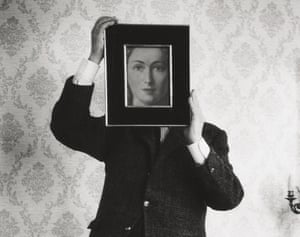

René Magritte: 130 photos featured in world-first exhibition – in pictures
In the mid-1970s, a swathe of photographs and films of and by René Magritte were discovered, 10 years after the artist’s death. The work is featured in an exclusive exhibition at Latrobe regional gallery in Victoria, Australia – a coup for the out-of-town space – which is offering a new perspective on the artist before the show tours globally.
One of the founders of Belgian surrealism and the father of pop art, Magritte is known for his irony, his conundrums; his blue skies, apples and bowler hats. The exhibition features 130 photographs by and of the artist, his friends and peers, alongside eight films – including many pieces which have never been exhibited.
Curator Xavier Canonne, director of Belgium’s Musée de la Photographie, offered Guardian Australia a selection of his favourites photos, with captions.
• René Magritte: the Revealing Image, Photos and Films is open at Latrobe Regional Gallery until 19 November; René Magritte: the Revealing Image by Xavier Canonne is out now
Shunk Kender: René Margitte in front of Le sens de realite (1960)
Magritte at the end of his life, front of one of his most important paintings, which he kept for many years.Photograph: René Magritte/Latrobe Regional GalleryThe Bouquet (Le Bouquet) (1937)
An improvised composition featuring René Magritte and his wife, Georgette; this might also become the theme of a painting, their faces floating above the sheets.Photograph: René Magritte/Latrobe Regional GalleryThe Meeting (Le Rendez-vous) (1938)
Georgette holding doves after world war two, as an allegory of peace or as a suspended moment of happiness?Photograph: René Magritte/Latrobe Regional GalleryFlirtatiousness (La coquetterie) (1929)
A photo of Magritte, made by a ‘photomaton’ in Paris in 1929. The surrealists were fascinated by this new attraction created in the US, where photographs were created without the presence of a photographer.Photograph: René Magritte/Latrobe Regional GalleryThe Giant (Le Géant) (Paul Nouge at the Belgian Coast, 1937)
Can one call it a ‘portrait’ if one cannot see the model’s face? For Magritte, reality is just an appearance. There is always something behind the things one sees.Photograph: René Magritte/Latrobe Regional GalleryRené Magritte and The Barbarian (Le Barbare) (1938)
Wearing a bowler hat, front of one of his favourite hero Fantômas’ paintings, The Master of Crime, which Magritte often refers to in his works. The painting was destroyed during one of the London bombing raids in the second world war.Photograph: René Magritte/Latrobe Regional GalleryThe Shadow and Its Shadow (1932)
This photo of René and Georgette is one of the most beautiful of the exhibition, but who had the idea for it? His friend Paul Nougé, the poet, or Magritte himself? It expresses the attitudes and meaning of love, for the surrealists, as its title indicates.Photograph: René Magritte/Latrobe Regional GalleryShunk Kender: René Magritte and The Likeness (La ressemblance) (1962)
Hiding himself behind a portrait. A way to engage playfully with the photographer, or to express the union of a female head on a male body?Photograph: René Magritte/Latrobe Regional GalleryThe Hunters’ Gathering (La rendez-vous de chase) (1934)
The ‘surrealist gang’ of Brussels in 1934, acting as members of the ‘mob’, wearing pocket squares, their wives sitting front of them in a photographer’s studio.Left to right: ELT Mesens, René Magritte, Louise Scutenaier, André Souris and Paul Nougé; seated: Iréne Hamoir, Marthe Beauvoisin and Georgette Magritte.Photograph: René Magritte/Latrobe Regional GalleryRené Magritte painting Youth Illustrated (La jeunesse illustrée) (1937)
In Edward James’ house in London, painting the collector’s ballroom and sitting front of his painting, as if he were part of the objects he represented.Photograph: René Magritte/Latrobe Regional GalleryQueen Semiramis (La reine Sémiramis) (1947)
Georgette poses for a 1947 painting – but this photo is so perfect that it could be seen as a work of art in itself rather than a model for one.Photograph: René Magritte/Latrobe Regional Gallery

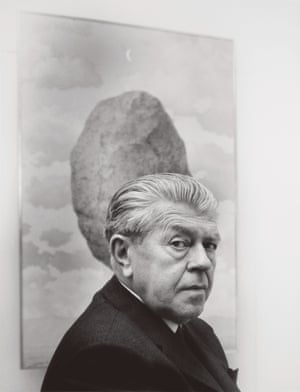
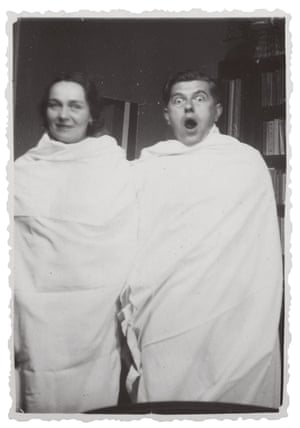
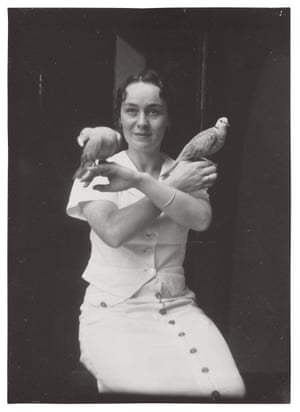
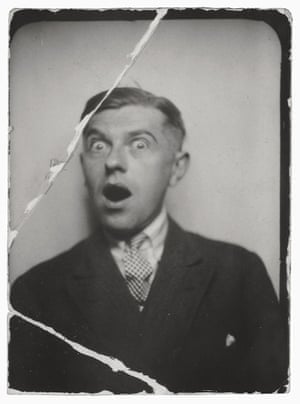
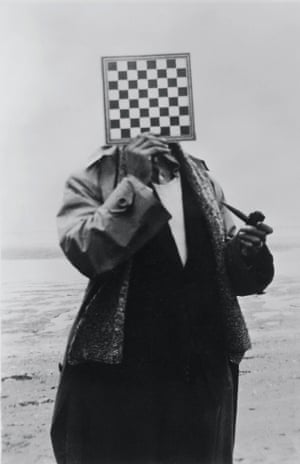
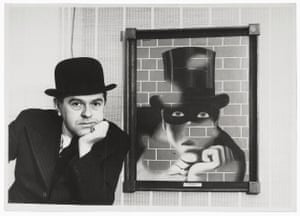
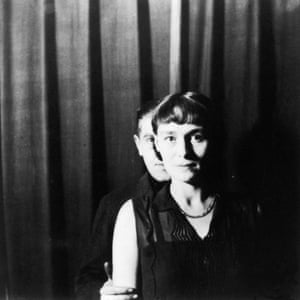
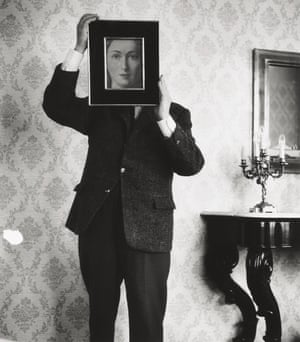
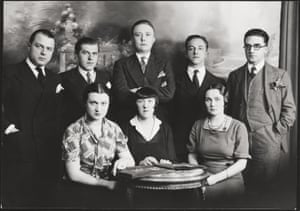
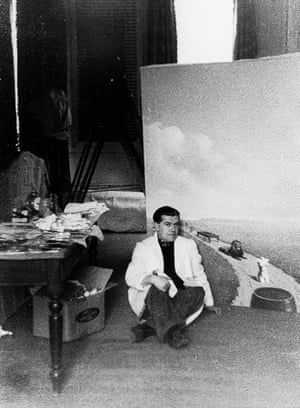
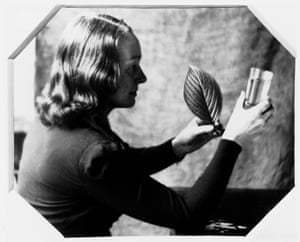
.jpg?mode=max?w=780)

No comments:
Post a Comment